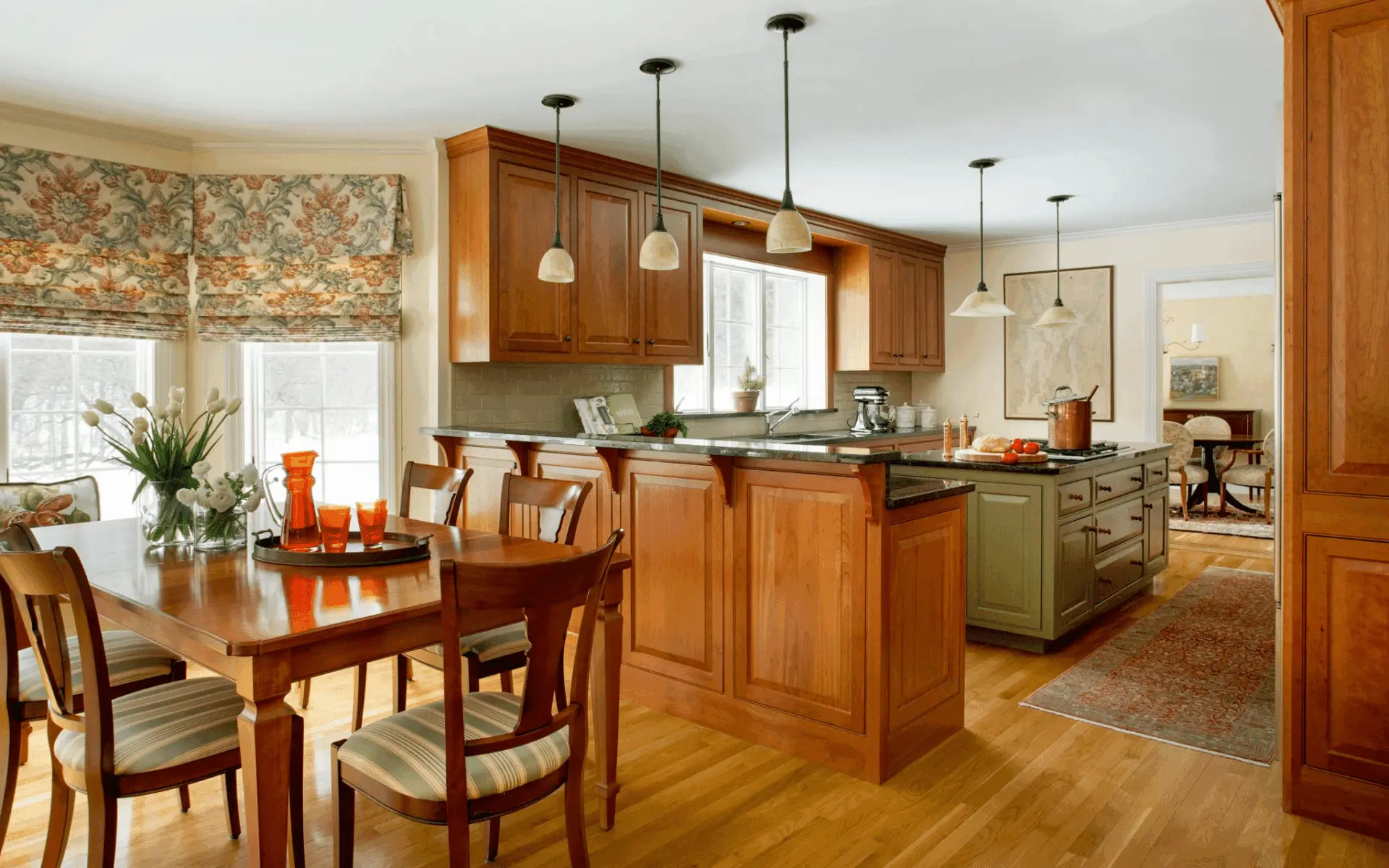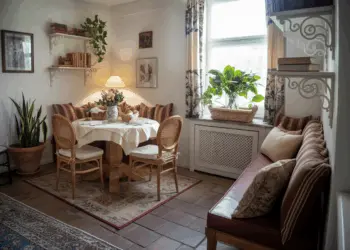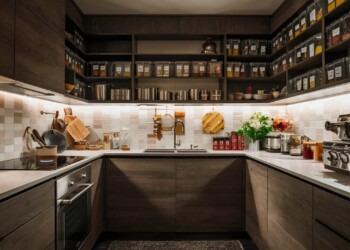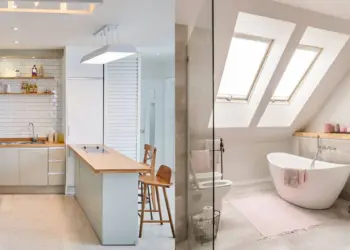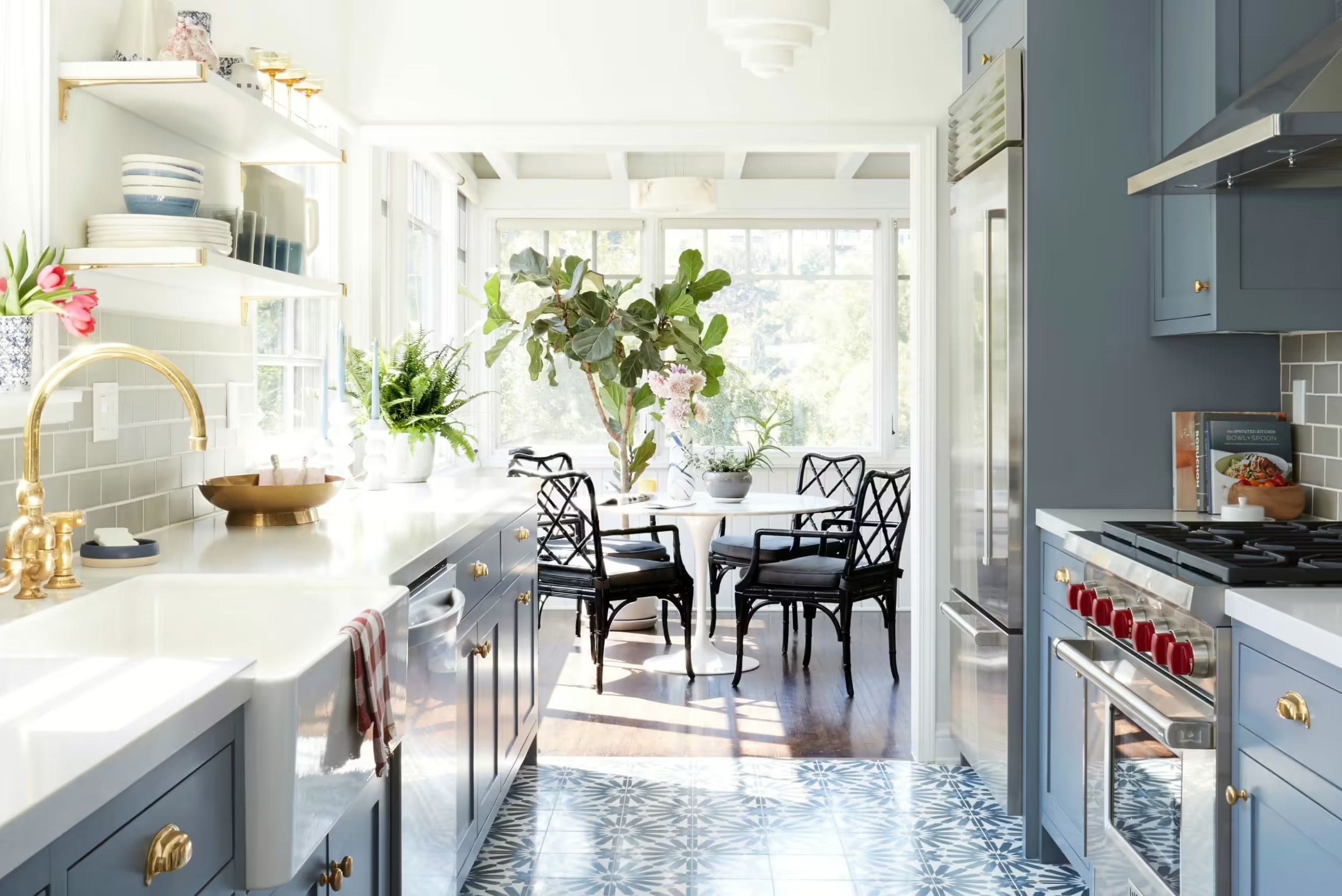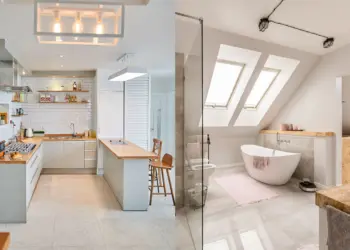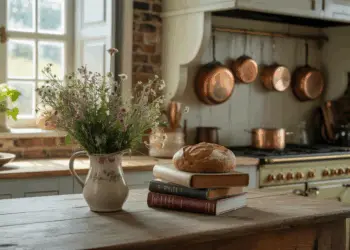Colonial kitchen design is a classic style that exudes warmth, charm, and a sense of history. Rooted in America’s early colonial period, this design seamlessly blends tradition with modern functionality. In this article, we’ll explore various ideas to help you create a colonial-inspired kitchen that’s both inviting and practical.
Table of Contents
Colonial Kitchen Colors
The Historical Significance of Colonial Colors
A Journey to the Past
The colonial period in America, spanning roughly from the late 16th century to the late 18th century, was a time of simplicity and practicality. The limited pigments available at the time influenced the kitchen colors of this era.
Earthy Tones
Colonial kitchens favored earthy and natural colors. Hues like ochre, burnt sienna, and deep forest green were commonplace. People derived these colors from readily available materials like clay and plants.
The Role of Functionality
Colonial kitchens did not choose their colors solely for aesthetics. They also served a functional purpose. Lighter colors helped reflect the limited natural light, making kitchens brighter and more welcoming.
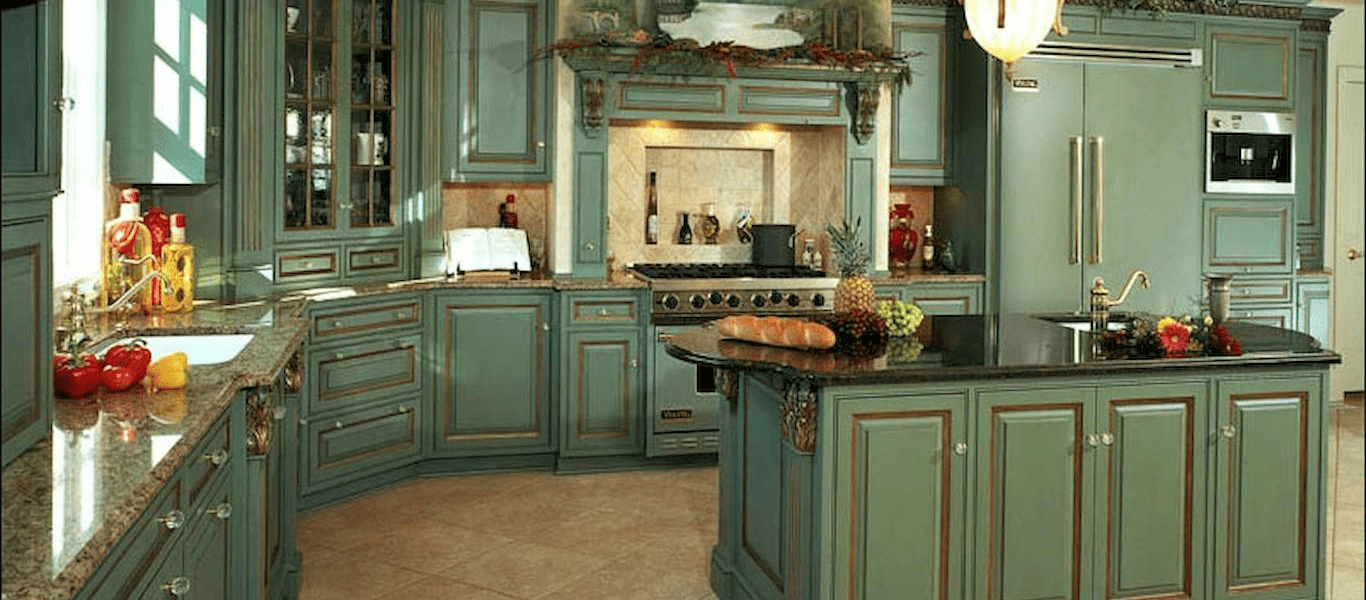
Embracing Colonial Colors in Modern Kitchens
The Timeless Appeal
Colonial colors continue to appeal to homeowners because of their timeless and cozy feel. They create a warm and inviting atmosphere that is perfect for gathering and cooking.
Choosing the Right Palette
When incorporating colonial colors into your modern kitchen, consider a palette of muted yellows, deep reds, black ,and sage greens. These colors evoke the colonial era while maintaining a contemporary look.
Balance and Contrast
To prevent your kitchen from feeling too dated, balance colonial colors with neutral tones like white or beige. This contrast will give your kitchen a modern twist.
Accessorizing with Authenticity
Enhance the colonial feel by using accessories like vintage copper cookware, wooden utensils, and open shelving to display antique dishes and jars.
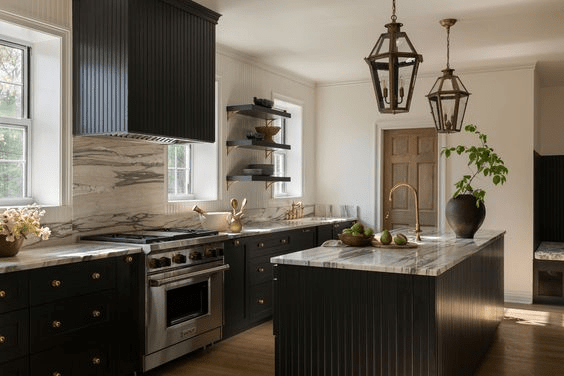
Colonial Kitchen Cabinets
In the world of interior design, trends come and go, but some classics stand the test of time. Colonial kitchen cabinets are a prime example of timeless elegance that can transform your kitchen into a charming and functional space. we will explore the beauty and functionality of colonial kitchen cabinets, their historical significance, and why they remain a popular choice for homeowners today.
Understanding Colonial Kitchen Cabinets
What Are Colonial Kitchen Cabinets?
Colonial kitchen cabinets are a style of cabinetry inspired by the early American colonial period. These cabinets are characterized by their simplicity, craftsmanship, and functionality. They often feature:
- Shaker-Style Doors: Shaker-style doors with clean lines and recessed panels are a hallmark of colonial cabinets.
- Natural Wood Finishes: Colonial cabinets are typically crafted from hardwoods like oak, cherry, or maple, showcasing the natural beauty of the wood.
- Simple Hardware: Drawer pulls and knobs are minimalistic, adding to the understated charm of these cabinets.
Historical Significance
To appreciate the enduring appeal of colonial kitchen cabinets, it’s essential to delve into their historical roots. These cabinets draw inspiration from the 17th and 18th-century colonial America, where functionality and craftsmanship were paramount. The early American settlers, including the Shakers, believed in simplicity, and this philosophy is reflected in the design of these cabinets.
Why Choose Colonial Kitchen Cabinets
Timeless Aesthetic
One of the primary reasons homeowners opt for colonial kitchen cabinets is their timeless aesthetic. They effortlessly blend with various interior styles, from traditional to modern, making them a versatile choice.
Durability and Craftsmanship
Colonial cabinets are built to last. Crafted from sturdy hardwoods and featuring dovetail joints, they can withstand years of daily use, making them a practical investment.
Ample Storage
With spacious cabinets and deep drawers, colonial kitchen cabinets offer ample storage space for your cookware, utensils, and pantry items, helping you keep your kitchen organized and clutter-free.
Incorporating Colonial Cabinets in Your Colonial kitchen
Choosing the Right Finish
When selecting colonial kitchen cabinets, consider the finish that best complements your kitchen’s overall design. Darker finishes like cherry or walnut can add warmth, while lighter woods like maple create a bright and airy feel.
Pairing with Countertops
To create a harmonious look, pair your colonial cabinets with countertops that match or contrast effectively. Quartz or granite countertops can enhance the elegance of your colonial-style kitchen.
Hardware Selection
While colonial cabinets favor simple hardware, you can choose from a variety of finishes like brushed nickel or antique brass to add a personal touch to your kitchen.
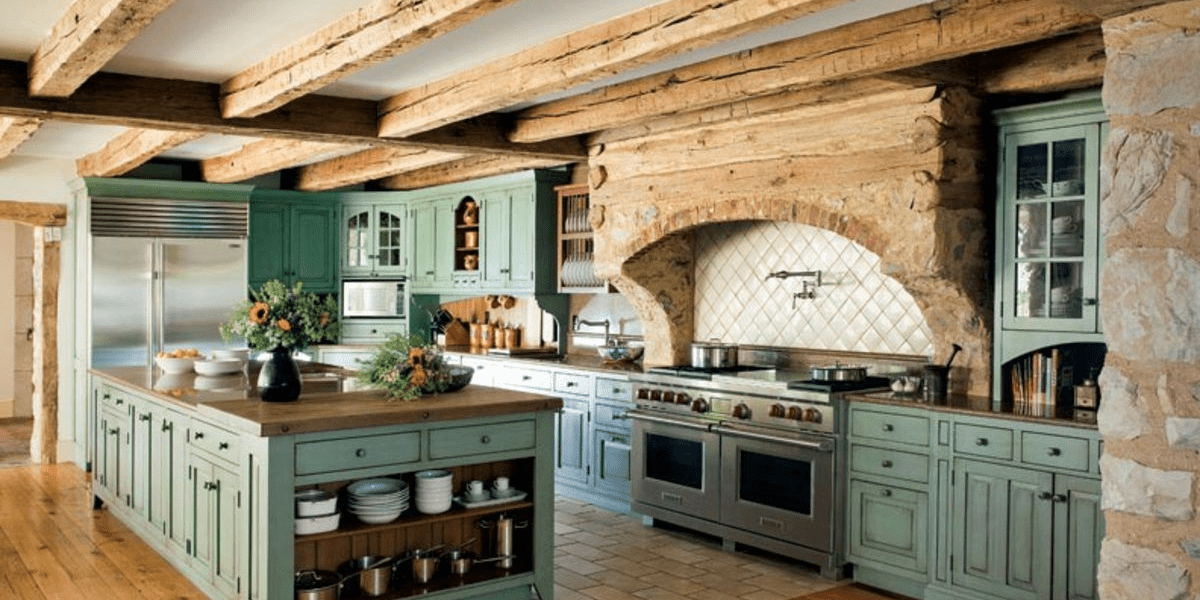
Open Shelving in your Colonial Kitchen
Incorporate open shelving with wooden brackets to display your favorite dishes and glassware. This not only adds a touch of authenticity but also makes your kitchen feel more open and accessible.
Farmhouse Sink in your Colonial Kitchen
A deep, apron-front farmhouse sink is a quintessential element of colonial kitchens. It’s not only functional but also adds a rustic charm to the space. Opt for a porcelain or fireclay finish for an authentic look.
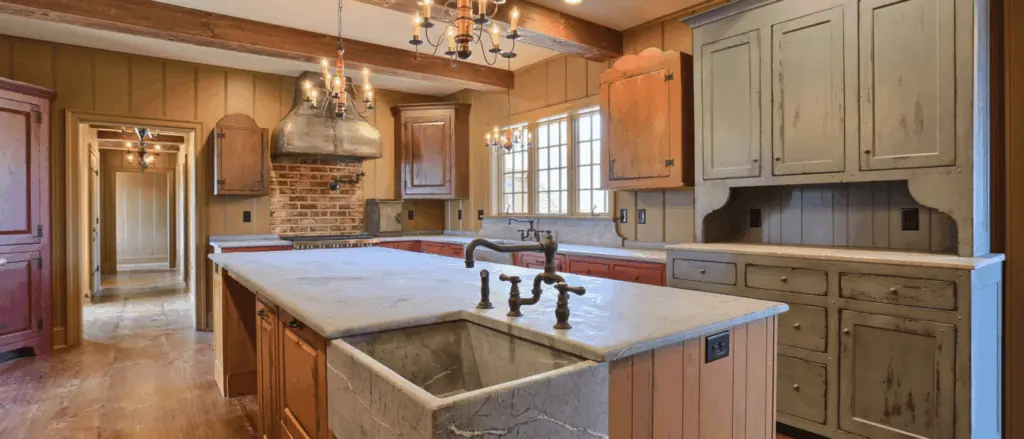
Butcher Block Countertops in your Colonial Kitchen
Consider using butcher block countertops for a warm and practical workspace. The natural wood tones complement the overall design and provide a durable surface for food preparation.
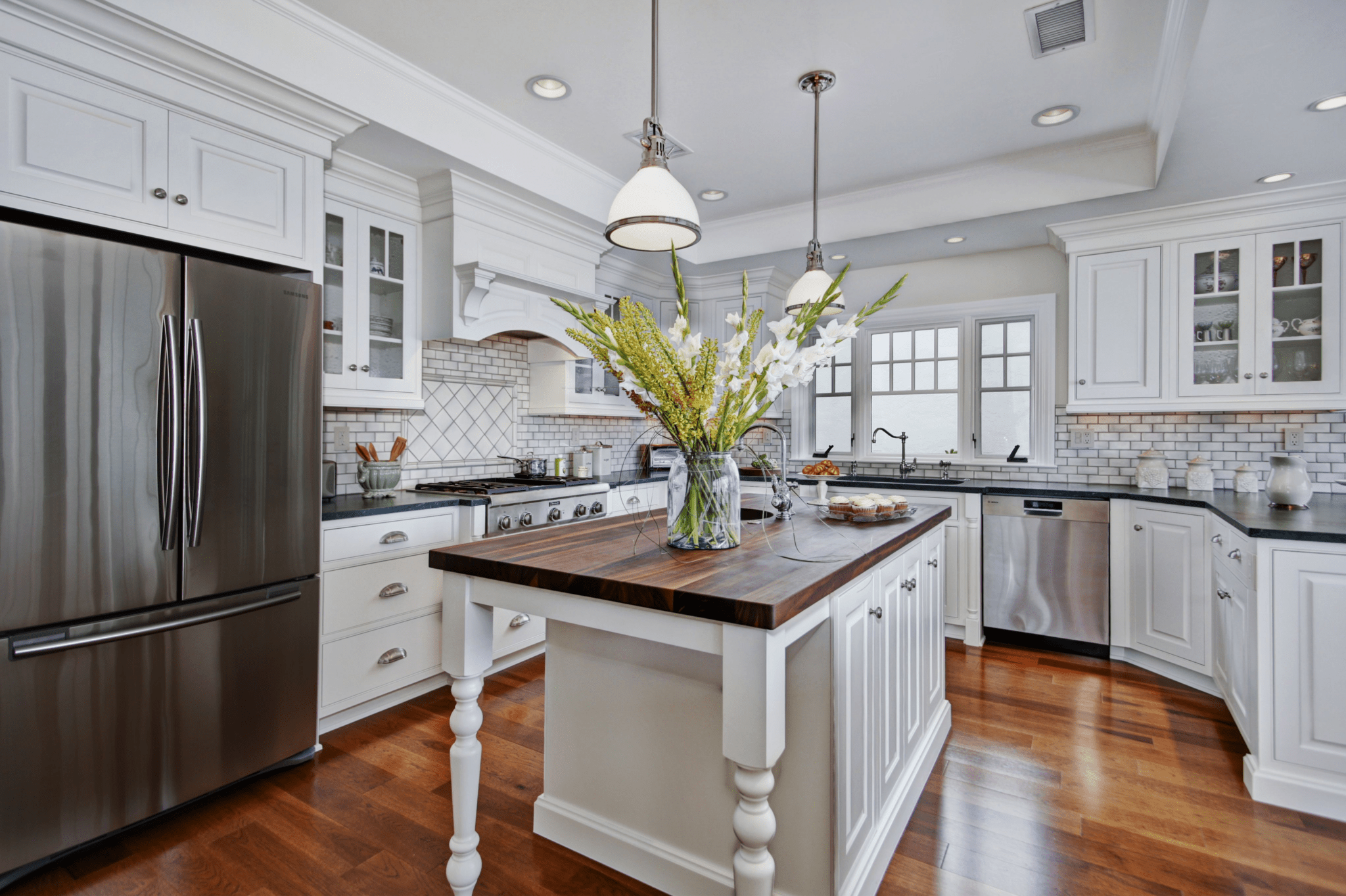
Antique Hardware
Choose antique-style hardware for your cabinets and drawers. Oil-rubbed bronze or brass pulls and knobs add a vintage touch that enhances the colonial aesthetic.
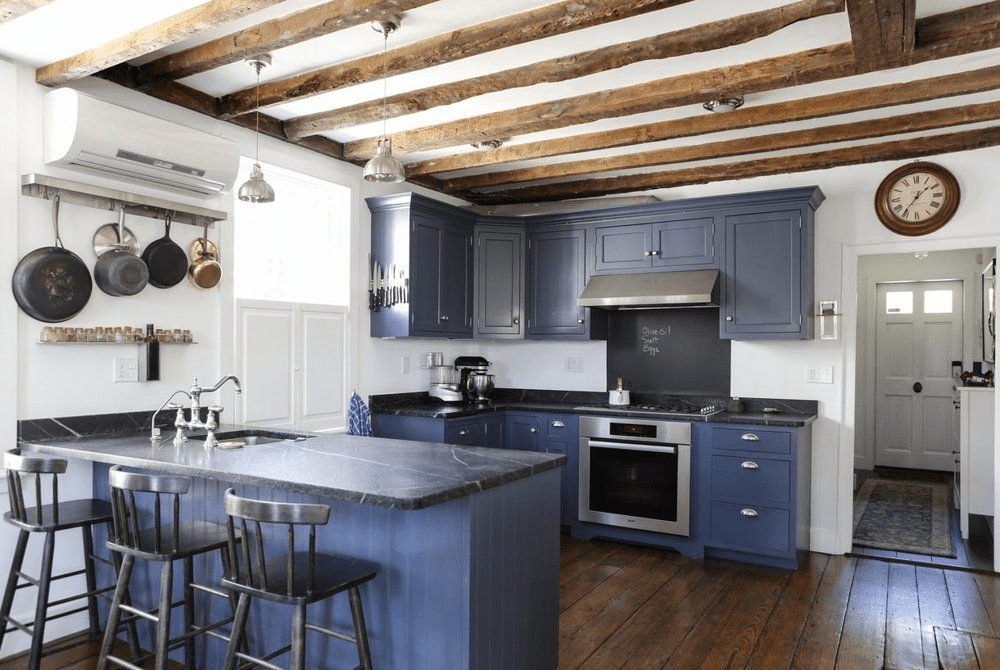
Copper Cookware
Display copper pots and pans on wall-mounted racks or hooks. Copper not only has excellent heat conductivity but also adds a luxurious touch to your kitchen.
Period Lighting
Install period-appropriate lighting fixtures such as lantern-style pendants or wrought-iron chandeliers. These fixtures not only provide functional lighting but also become focal points in your kitchen.
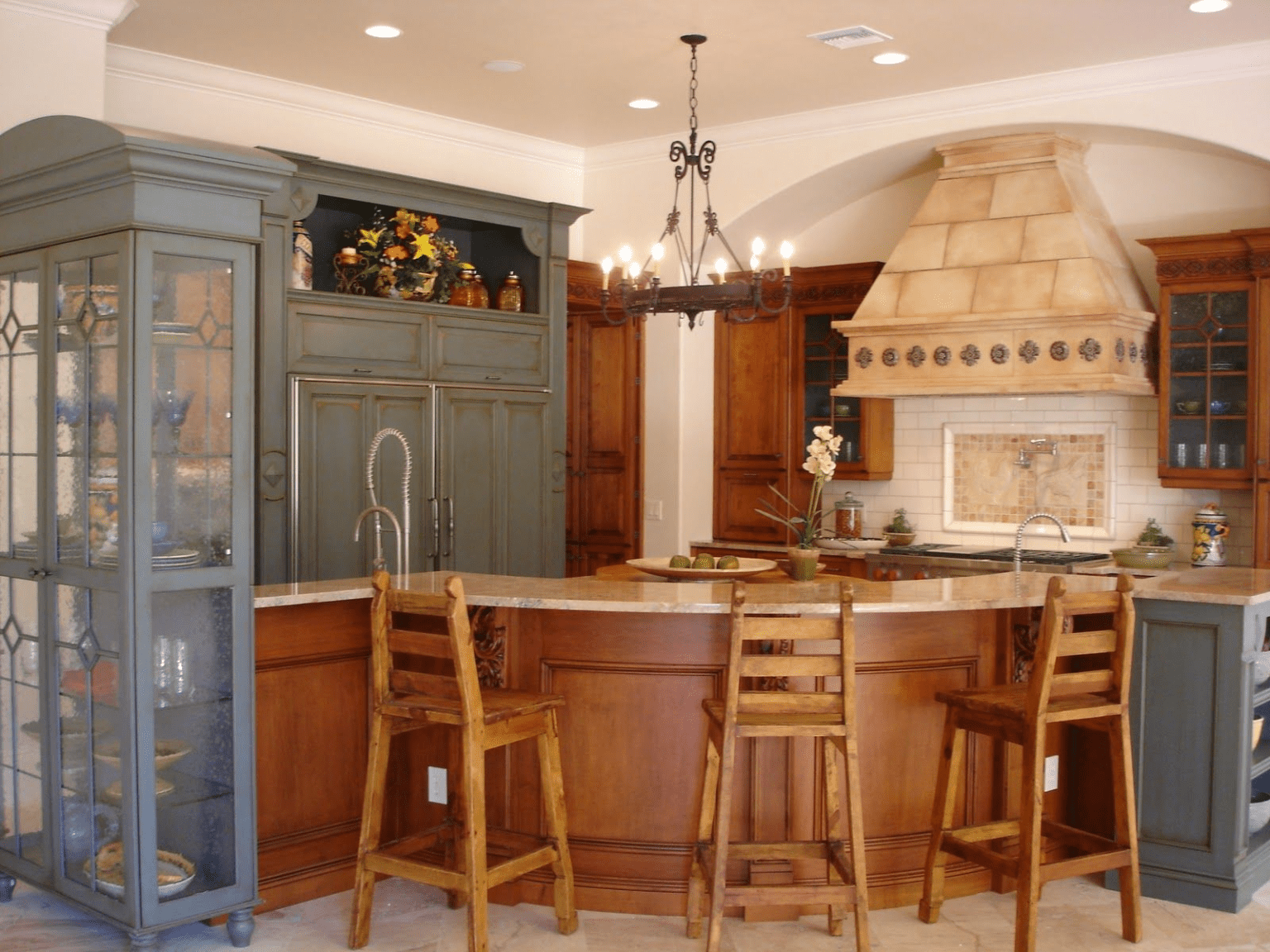
Delft Tiles or Wainscoting
Consider incorporating Delft tiles or wainscoting as a backsplash or wall covering. These traditional elements add character and a sense of history to your kitchen.
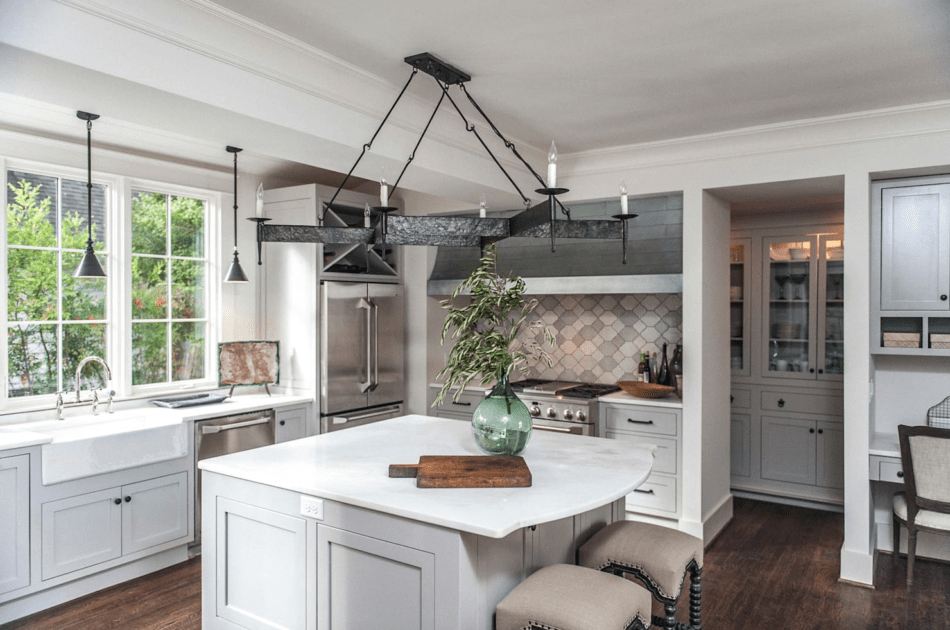
Colonial-Inspired Decor
Add colonial-inspired decor items like wooden breadboards, pewter or brass accents, and vintage-style dishware. These finishing touches complete the look and feel of your colonial kitchen.
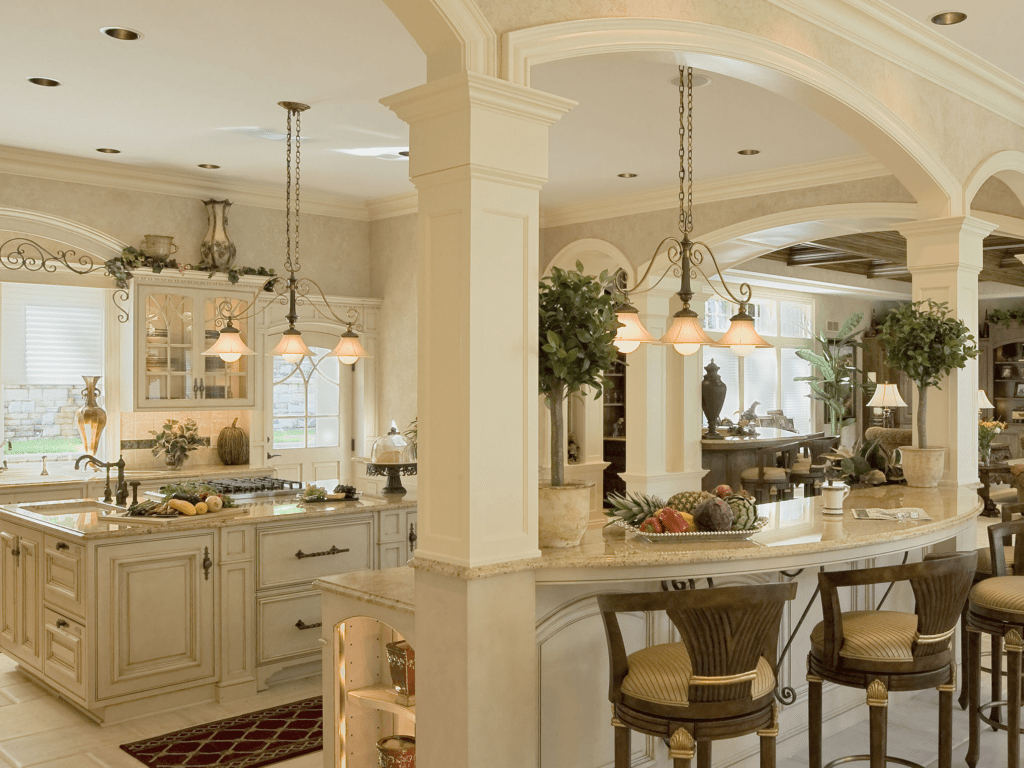
Functional Layout
Ensure your kitchen layout is functional. Colonial kitchens were designed for efficiency, so consider a layout that allows for easy movement between the stove, sink, and prep areas.
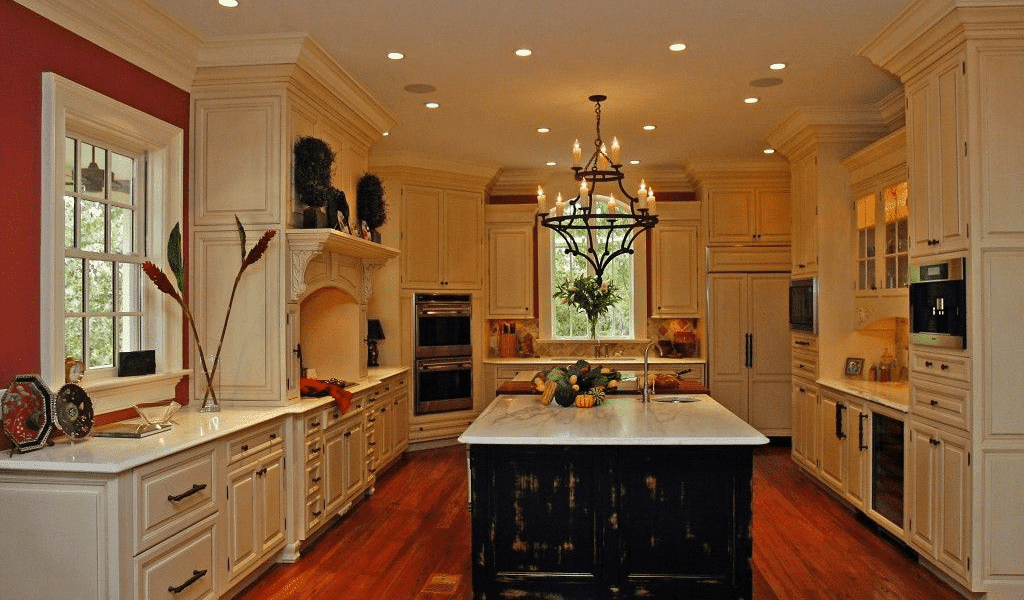
Fireplace Hearth
If space allows, consider a fireplace hearth with a mantel. This not only adds warmth but also serves as a focal point for your kitchen.
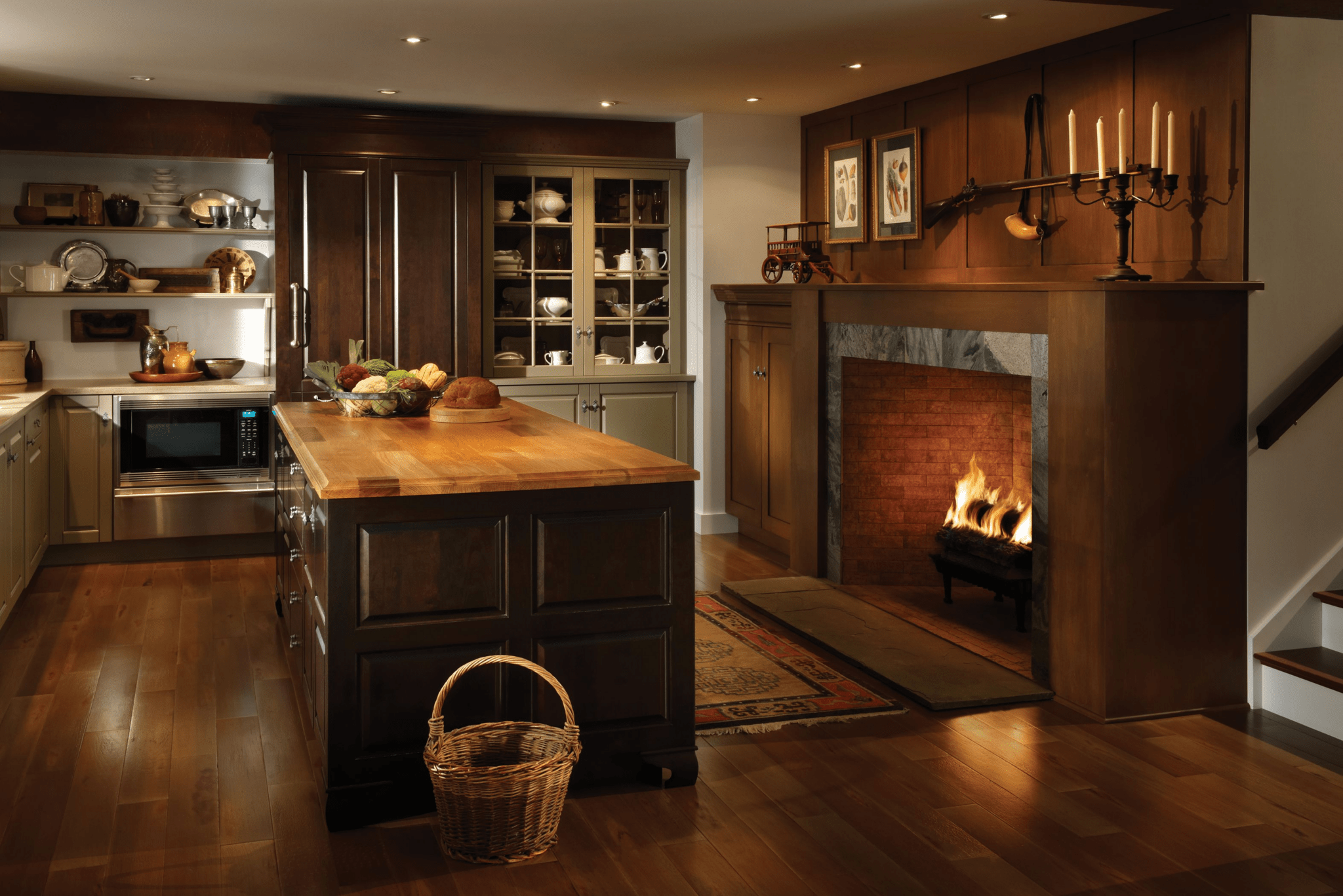
Textured Fabrics
Incorporate textured fabrics for curtains or chair cushions. Toile, gingham, or floral prints in soft colors can add a touch of colonial charm.
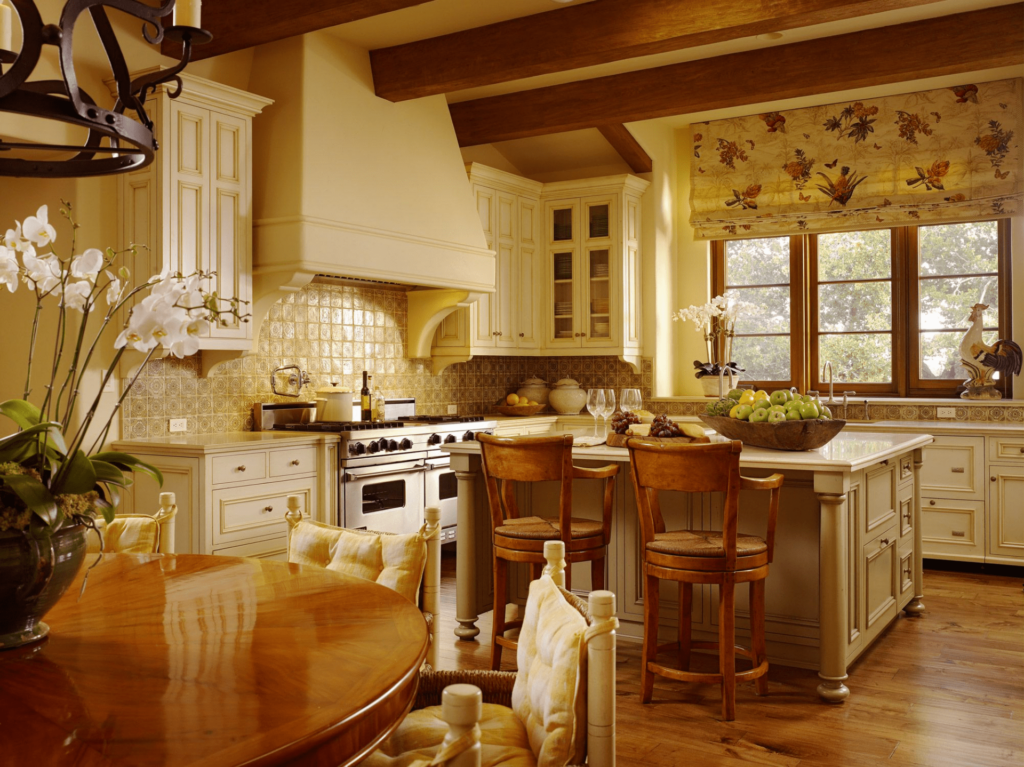
Dining Nook
Create a cozy dining nook with a wooden table and chairs. This space can serve as a gathering point for family meals, reminiscent of colonial times.
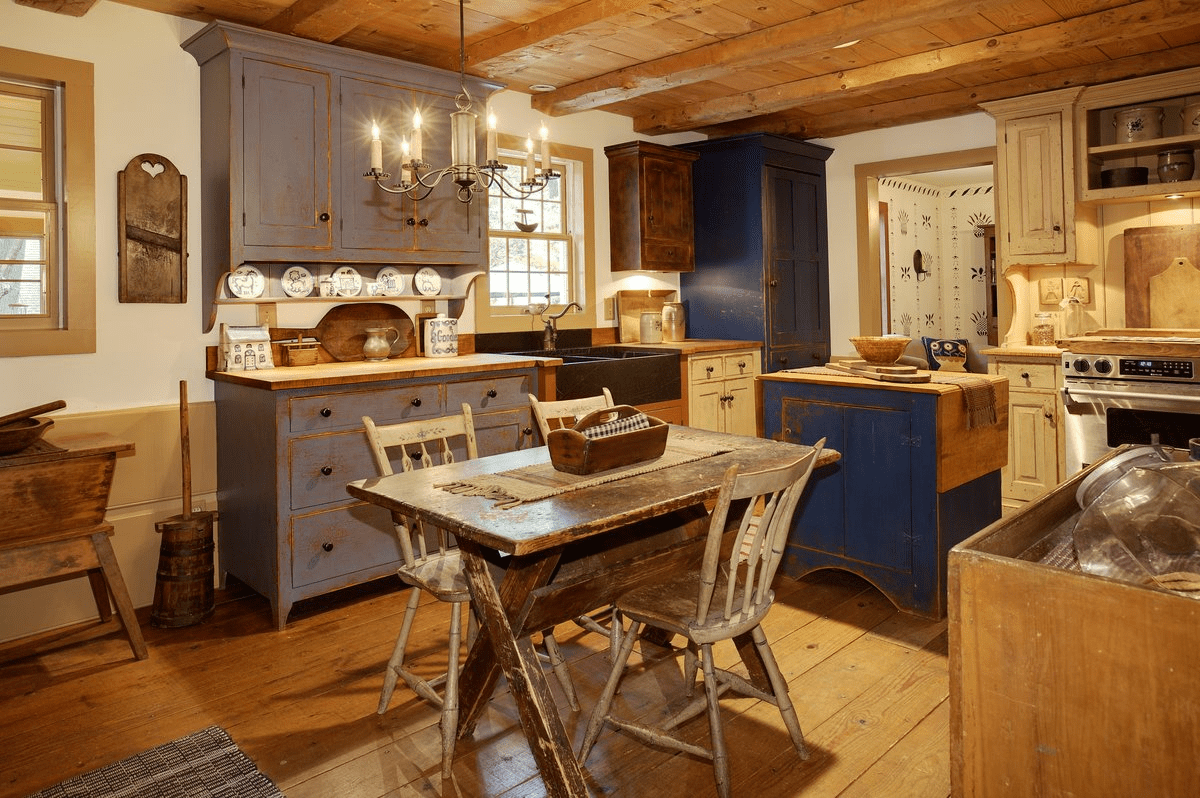
Modern Appliances
While embracing colonial design, don’t compromise on modern appliances. Stainless steel or black appliances can seamlessly blend with the traditional look.
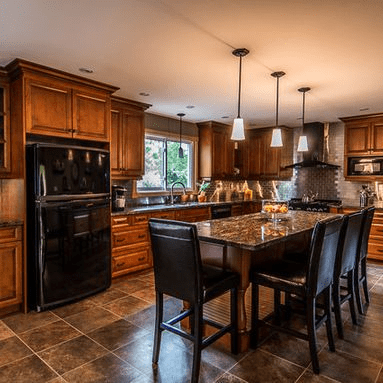
Maintaining Your Colonial Kitchen
Once you’ve achieved the colonial kitchen of your dreams, it’s essential to maintain its timeless charm and functionality. Here are some tips to keep your space looking its best:
Regular Cleaning
Maintain cleanliness by wiping down wooden surfaces and countertops regularly. Use mild, non-abrasive cleaners to preserve the finish of your cabinets and wooden elements.
Polish Hardware
Periodically clean and polish the antique hardware to prevent tarnishing. Brass and bronze fixtures can regain their luster with a gentle brass cleaner.
Wood Care
Keep your wooden cabinets and countertops in top condition by applying wood oil or wax as needed. This not only enhances their appearance but also provides protection.
Prevent Water Damage
Be cautious around the farmhouse sink to avoid water damage to the wooden cabinetry beneath. Use a protective mat if necessary.
Fireplace Maintenance
If you have a fireplace hearth in your kitchen, ensure it’s regularly cleaned and maintained to prevent soot buildup. Regularly inspect the chimney and flue for safety.
Functional Updates
Consider periodic updates to your kitchen appliances while maintaining the overall colonial look. Modern, energy-efficient appliances can improve functionality without compromising style.
Seasonal Decor Changes
Switch out seasonal decor items to keep your kitchen feeling fresh and in tune with the time of year. For example, add wreaths and greenery during the holidays.
Organize with Purpose
Maintain an organized kitchen by using open shelving for frequently used items and cabinets for less-used items. This helps maintain the colonial aesthetic while ensuring practicality.
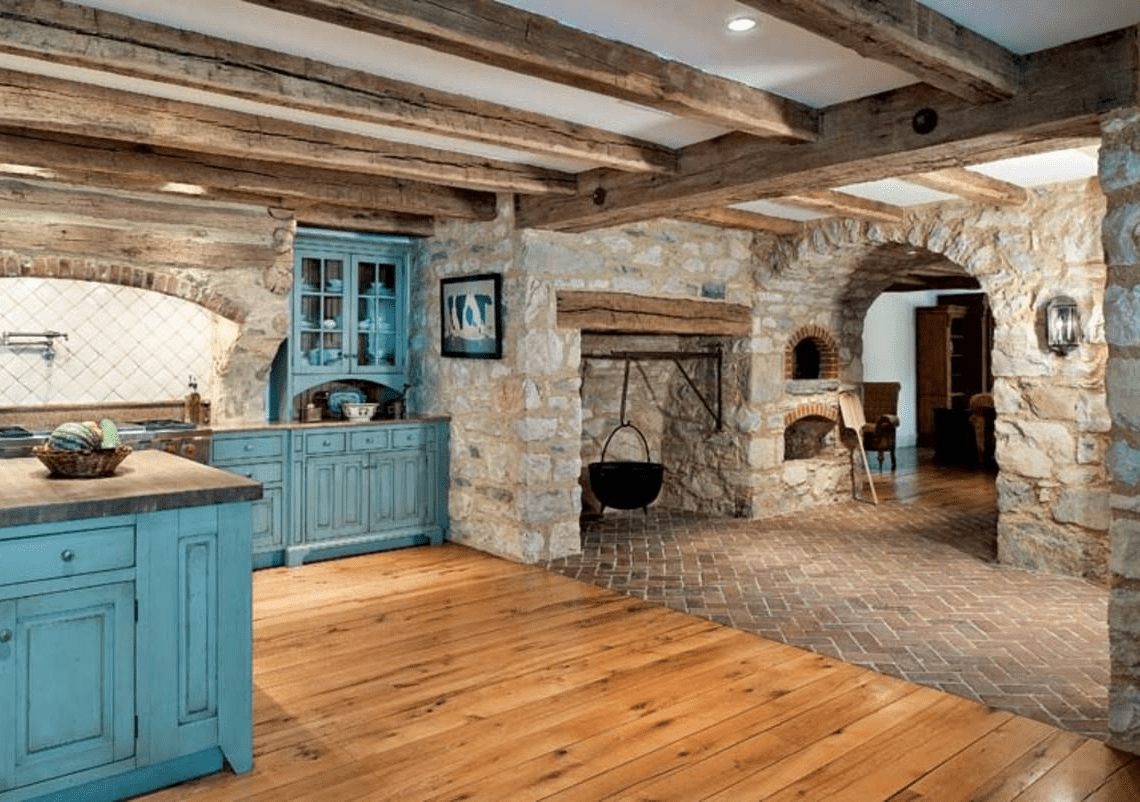
Incorporating these colonial kitchen design ideas will transform your space into a welcoming and timeless haven. Whether you’re an admirer of history or simply drawn to the classic charm, a colonial-inspired kitchen is sure to become the heart of your home.
FAQs
What is a colonial kitchen?
A colonial kitchen refers to a kitchen design style reminiscent of the colonial period in American history, characterized by simplicity and functionality.
What would a colonial kitchen look like?
A colonial kitchen typically features wooden furnishings, a central fireplace, primitive cookware, neutral colors, and a focus on practicality.
Are colonial kitchen cabinets suitable for modern kitchens?
Yes, colonial kitchen cabinets can seamlessly blend into modern kitchens, adding a touch of timeless charm.
What was the most important element of the colonial kitchen?
The most important element was functionality, with a central fireplace for cooking and heating being a key feature.
What are colonial cabinets?
Colonial cabinets are wooden storage cabinets used in colonial-style kitchens, often plain in design and used for storing kitchen items.
Can I customize the hardware on my colonial cabinets?
Absolutely! You can choose from various hardware finishes to personalize your cabinets to your liking.
What makes colonial style?
Colonial style is defined by simplicity, natural materials, practicality, and a historical American design influence.
What is colonial style called?
Colonial style is simply referred to as “Colonial” or “Colonial American style.”
